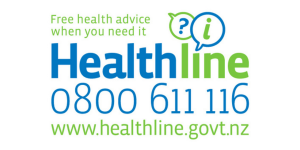Kamini
Key points about Kamini
- Kamini is an ayurvedic medicine, containing opium, that is illegal in Aotearoa New Zealand.
- Kamini can cause opioid addiction.
- Kamini can cause overdose which can lead to coma and death.
- There is treatment available for people who want to stop taking Kamini which is proven to work. It's known as opioid substitution treatment.

Kamini Vidrawan Ras (also known as Kamini) is an ayurvedic herbal medicine marketed for strength, energy, endurance, virility and improved sexual function. It's a class B illegal substance in Aotearoa New Zealand because it contains raw opium which is an opioid. Opioids are substances used in medicine to treat severe pain (eg, Morphine).
Opioids can also be found in illegal substances such as Kamini.
Kamini may also contain heavy metals such as lead, mercury and arsenic.
This page is also available in Punjabi. [PDF, 404 KB]
- Taking too much Kamini may cause an opiate overdose which is dangerous and can lead to death.
- Kamini can also cause reduced testosterone levels and intimacy issues such as erectile problems.
- Long term use of Kamini can cause dependence and addiction, because it contains opium. Addiction is when:
- you continue taking Kamini despite the harm it's causing to you or others around you, and
- you're unable to stop when you want to.
- The longer you take Kamini for, the more you adjust to it and 'feel' it less. This is because your brain gets used to the dose of Kamini. This means you need to take more Kamini to have the same effect.
- If you've become used to Kamini, reducing it or stopping taking it will lead to withdrawal symptoms.
- Taking Kamini can also cause heavy metal poisoning, such as lead and mercury toxicity – see how to recognise heavy metal poisoning below.
If you're dependent on, or becoming addicted to, Kamini you'll find you're needing:
- to take more to get the same effect, or
- to keep taking the same amount to avoid getting sick from withdrawal.
You may be addicted to Kamini if you continue using it, even though it causes harm to you or others around you, such as your friends, whānau and workmates.
Some signs of addiction can include:
- loss of control over your use of Kamini
- experiencing withdrawal symptoms when you cut back or stop using Kamini – see the section on withdrawal symptoms below.
- financial stress from the cost of buying it
- loss of relationships with family and friends
- loss of work due to sacrificing work commitments to continue the addiction.
Withdrawal symptoms are the physical or emotional responses experienced when you take away something your body has become dependent on.
When you reduce the amount of Kamini you're taking, or stop it altogether, withdrawal symptoms start within 12 to 48 hours. Symptoms are like having the flu with a tummy bug.
Symptoms may include:
- sweating
- nausea (feeling sick) and vomiting (being sick)
- diarrhoea (runny poo)
- tummy pain or cramping
- trouble sleeping
- muscle aches
- fast heartbeat
- runny nose
- anxiety
- 'goosebumps' (bumpy skin around hairs standing up).
Find out more about opioid withdrawal symptoms and how to manage them.
Symptoms of heavy metal poisoning from lead and mercury can seem like you have other illnesses.
Some of the symptoms include:
- mood changes such as irritability or depression
- memory issues
- sleep issues
- headaches
- tingling around your hands and fingers
- lack of appetite
- nausea (feeling sick)
- diarrhoea (runny poo) or constipation (hard poo that's difficult to pass)
- tummy pains
- weight loss.
In the later stages of poisoning, these heavy metals can affect your kidneys, bones, eyes, heart, blood and reproductive system.
Heavy metal poisoning can also lead to seizures, coma and death.
Heavy metal poisoning is a medical emergency. If you think you have heavy metal poisoning, seek medical attention immediately.
Overdose of Kamini is caused by the opium found in Kamini.
Symptoms of Kamini overdose may include:
- being very sleepy or difficult to wake
- being unconscious
- having irregular or no breathing
- snoring unusually or deeply
- making gurgling sounds
- being limp and floppy
- having tiny pupils.
Video: How to recognise and respond to an overdose
(New Zealand Drug Foundation, NZ, 2024)
Opioid overdose is an emergency. Call 111 for help immediately if you suspect someone has an opioid overdose.
While you're waiting for the ambulance to arrive:
- check for any danger to you or to the person such as electrical wiring
- stay with the person
- try to wake the person
- turn the person onto their side and put them in recovery position
- stay on the phone with emergency services until help arrives – they may ask you to provide recue breaths or CPR and will guide you on what to do.
Naloxone is used as a treatment for opiate overdose. It's given as an injection. It's available free and anonymously from needle exchanges throughout Aotearoa New Zealand. Find your nearest needle exchange outlet(external link).
Video: How to use injectable nalaxone to reverse an opioid overdose
If you have access to naloxone watch the video on how to administer naloxone in an emergency.
(New Zealand Drug Foundation, NZ, 2023)
Read more about opioid overdose.
If you are taking Kamini a few times a week, you can attend drug addiction counselling services through different organisations.
If you are taking it every day, you can go on something called opioid substitution treatment (OST). This involves taking Buprenorphine or methadone medication to replace Kamini and allow you to stop taking it. This medication is legal, safer and free if you're eligible for funded healthcare in Aotearoa New Zealand.
Find out more about opioid substitution treatment(external link).
To get more information about where to seek help from:
- Make an appointment to see your healthcare provider.
- Call Healthline for free on 0800 611 116.
- Call Alcohol and Drug Helpline on 0800 787 797 (24 hours a day, 7 days a week) to speak to a trained counsellor.
The Level lists opioid substitution treatment (OST) services(external link). Have a look at their page to find the closest one to you.
Find out more about additional addiction community services in your area(external link).
Kamini – what you need to know(external link) The Level, NZ, 2024
Support and advice(external link) The Level, NZ
Brochures
Opioid substitution treatment(external link) Matua Raki, NZ, 2014
Kamini in Punjabi [PDF, 404 KB] Healthify He Puna Waiora, NZ, 2025
References
- Kamini – what you need to know(external link) The Level, NZ, 2024
- Opioid medicines overview Healthify He Puna Waiora, NZ
- Opioid addiction(external link) UK Addiction Treatment Centres, UK, 2025
- Opioid medicines and chronic non-cancer pain(external link) NPS Medicinewise, Australia, 2021
- Addiction Healthify He Puna Waiora, NZ
- Mercury and health Healthify He Puna Waiora, NZ, 2022
- Lead poisoning(external link) Health New Zealand |Te Whatu Ora, NZ, 2025
- Opioid overdose Healthify He Puna Waiora, NZ, 2025
- Withdrawal(external link) Alcohol and Drug Foundation, Australia
Credits: Dr Val Cheah, GP and Rural Hospital Doctor
Reviewed by: Dr Jo Lane, Addiction Medicine Doctor
Last reviewed:
Page last updated:





